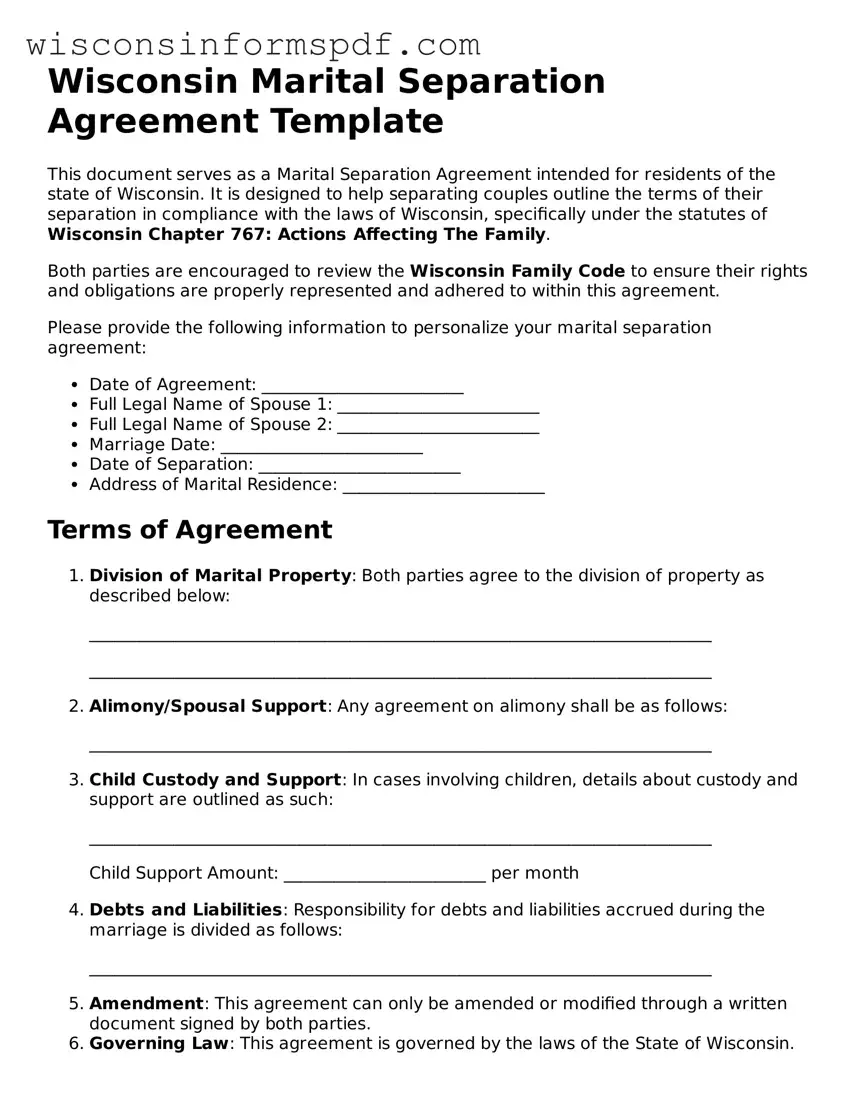Wisconsin Marital Separation Agreement Template
This document serves as a Marital Separation Agreement intended for residents of the state of Wisconsin. It is designed to help separating couples outline the terms of their separation in compliance with the laws of Wisconsin, specifically under the statutes of Wisconsin Chapter 767: Actions Affecting The Family.
Both parties are encouraged to review the Wisconsin Family Code to ensure their rights and obligations are properly represented and adhered to within this agreement.
Please provide the following information to personalize your marital separation agreement:
- Date of Agreement: ________________________
- Full Legal Name of Spouse 1: ________________________
- Full Legal Name of Spouse 2: ________________________
- Marriage Date: ________________________
- Date of Separation: ________________________
- Address of Marital Residence: ________________________
Terms of Agreement
- Division of Marital Property: Both parties agree to the division of property as described below:
__________________________________________________________________________
__________________________________________________________________________
- Alimony/Spousal Support: Any agreement on alimony shall be as follows:
__________________________________________________________________________
- Child Custody and Support: In cases involving children, details about custody and support are outlined as such:
__________________________________________________________________________
Child Support Amount: ________________________ per month
- Debts and Liabilities: Responsibility for debts and liabilities accrued during the marriage is divided as follows:
__________________________________________________________________________
- Amendment: This agreement can only be amended or modified through a written document signed by both parties.
- Governing Law: This agreement is governed by the laws of the State of Wisconsin.
Both parties have entered into this agreement voluntarily and without any duress or undue influence. By signing below, both parties agree to the terms and conditions outlined in this Wisconsin Marital Separation Agreement.
Signature of Spouse 1: ________________________ Date: ________________________
Signature of Spouse 2: ________________________ Date: ________________________
This agreement is not final until reviewed and approved by a Wisconsin court.
